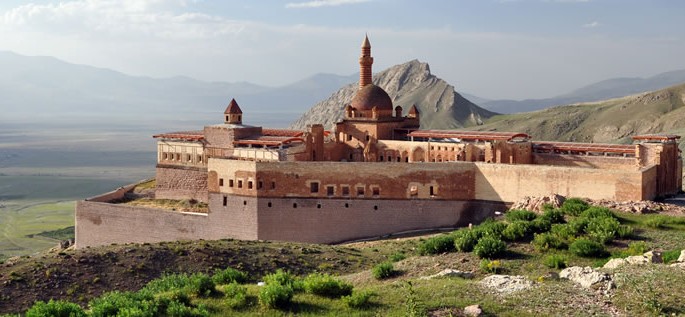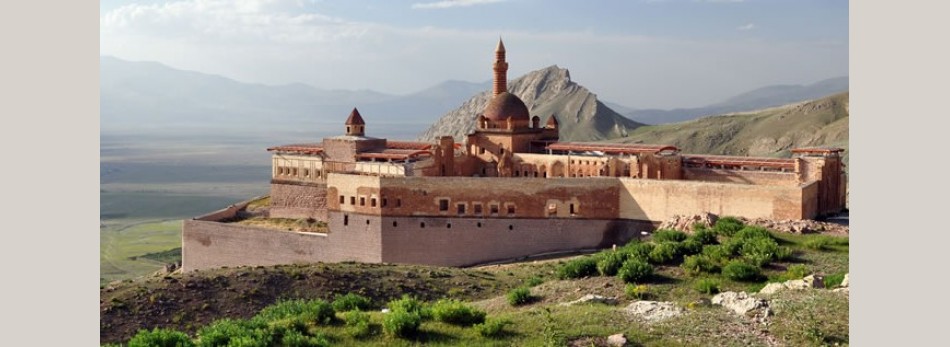Kurdish

Kurdish (Kurdi, Курди) belongs to the Indo-Iranian branch of the Indo-European language family. It is believed that the first Indo-European-speaking people began to move into what is present-day Kurdistan about 4,000 years ago. In the next two thousand years, the original language of the Kurds was completely displaced by an Indo-European variety that eventually became Kurdish as it is spoken today. Kurdish is a macrolanguage that consists of a continuum of closely related languages spoken over a large territory that encompasses Turkey, Kurdistan, Iran, Syria, Iraq, Iran, Armenia, Georgia, and Azerbaijan with a large diaspora spread all over Europe and the United States.
The status of Kurdish varies from country to country. Iraqi Kurdistan and the Kurdistan Province in Iran are officially acknowledged as parts of Kurdistan. However, the Turkish and Syrian governments do not recognize their parts of Kurdistan as a specific region.
-
Iran
Most Iranian Kurds live in villages, and the rest are nomadic. They speak Kurdish at home. Kurdish is taught in schools in Kurdish areas. There are newspapers, magazines, and radio broadcasts in Kurdish. Most Kurdish speakers in Iran also speak Western Persian (Farsi). -
Iraq
Kurdish has official regional status in Iraqi Kurdistan. Since 1919, it has been the medium of instruction in public schools. There is a newspaper and some publications in Kurdish, as well as TV and radio broadcasts. There has been an attempt to establish a literary language based on the dialect of Erbil, the capital of Kurdistan, and to purge it of Arabic loanwords. -
Turkey
Kurdish has a long history of persecution in Turkey. It was banned in 1938 which led to a loss of literacy and growth of Kurdish-Turkish bilingualism. In 1961, with a new Turkish constitution, Kurdish publications began to appear, but were frequently banned as soon as they came out. In 1967-1980, a series of laws were passed to repress the use of Kurdish. In 1991, the Turkish government legalized the use of Kurdish. In 2006, Turkey allowed private television channels to begin limited airing of Kurdish language programming, except for children’s cartoons and educational programs that teach the Kurdish language and Kurdish literacy. -
Armenia
From the 1930’s to the 1980’s, Armenia’s small Kurdish community was protected and provided with state-sponsored cultural support. There was a Kurdish radio broadcast and a Kurdish newspaper. Performing arts flourished. With the dissolution of the Soviet Union, the situation changed drastically, and the Kurdish minority faces an uncertain future. -
Syria
The language is spoken at home. Syria opposes the use of Kurdish in public life.
Dialects
The distinction between language and dialect within Kurdish is problematic and is based on a variety of criteria, not all of them linguistic. The Kurdish Academy of Language divides the Kurdish languages/dialects into three major groups that do not include a number of other languages/dialects thought to belong to the Kurdish macrolanguage. Each of these major dialects, in turn, can be broken up into a number of smaller varieties. Ethnologue breaks up Kurdish into three large groups:
- Central Kurdish (Kurdi, Sorani) is spoken by 3.5 million people in Iraq and by 3.2 million in Iran. It is also spoken in Armenia, Azerbaijan, Georgia, Iran, Iraq, Lebanon, Syria, and Turkmenistan (Ethnologue). The total population of speakers of Central Kurdish is estimated at 6.8 million speakers (Ethnologue). There are 10 varieties of Central Kurdish. The Central dialect is considered to be the literary form of Kurdish.
- Northern Kurdish (Kermancî, Kirmancî, Kurdi, Kurdî, Kurmancî, Kurmanji) is spoken by 15 million people in Turkey. It is also spoken in Iran, Iraq, Lebanon, Syria, and Turkmenistan. The worldwide population of speakers of Northern Kurdish is estimated to be around 20.2 million people (Ethnologue). There are six regional varieties of Northern Kurdish.
- Southern Kurdish is spoken by 3 million people in Iran and Iraq (Ethnologue).
Structure
The description of Kurdish phonology given below is based on Central Kurdish considered to be the standard.
Vowels
Central Kurdish has ten vowel phonemes, i.e., sounds that differentiate word meaning. They are given below. Some vowels can be short or long. Vowel length makes a difference in word meaning. In the table below, vowel length is represented by a macron. Long vowels are represented by a circumflex accent, i.e., î, ê, â,ô, û.
|
Front
|
Central
|
Back
|
||||
|---|---|---|---|---|---|---|
|
Short
|
Long
|
Short
|
Long
|
Short
|
Long
|
|
| Close |
ī
|
ʉ
|
ū
|
|||
| Mid |
ē
|
ə
|
||||
| Open | ||||||
- Long vowels are shortened when unstressed or at the end of words.
- The vowel /ʉ/ is absent in other Indo-Iranian languages, and is the result of the influence of surrounding Turkic languages in which this vowel is very common.
- /ə/ = a in about
Consonants
Below is a chart of the consonant phonemes of Central Kurdish. Phonemes are sounds that differentiate word meaning. Phonemes given in parentheses occur only in loanwords.
|
Bilabial
|
.Labio-dental
|
Alveolar
|
Postalveolar
palatal |
Velar
|
Uvular | Pharyngeal |
Glottal
|
||
|---|---|---|---|---|---|---|---|---|---|
| Stops | voiceless |
t
|
(q)
|
||||||
| voiced | |||||||||
| Fricatives | voiceless |
f
|
ʃ
|
ħ
|
|||||
| voiced |
(v)
|
ʒ
|
.ɣ
|
ʕ
|
|||||
| Affricates | voiceless |
tʃ
|
|||||||
| voiced |
dʒ
|
||||||||
| Nasals |
ŋ
|
||||||||
| Laterals | fricative |
ɬ
|
|||||||
| approximant | |||||||||
| Rhotics | Trill | ||||||||
| Flap |
ɾ
|
||||||||
| Approximants | . |
ʋ
|
- /q/ ocurs primarily in Arabic loanwords.
- /v/ is highly infrequent.
- /ʃ/ = sh in shop
- /tʃ/ = ch in chop
- /ʒ/ = s in pleasure
- /dʒ/ = j in job
- /x/ = similar to ch in German pronunciation of Bach
- /ɣ/ = same as above but voiced; no equivalent in English
- /ħ/ has no equivalent in English.
- /ʕ / has no equivalent in English.
- /ŋ/ = ng in song
- /ɬ/ has no equivalent in English.
- /j/ = y in yet
Like other Iranian languages, Kurdish is an inflected language, i.e., it adds prefixes and suffixes to roots to express grammatical relations and to form words.
Nouns
- Nouns can be simple or compound.
- Any unmodified noun in Kurdish may be generic, i.e., it can refer to one or more than one items. Plural is not obligatory when more than one item is implied.
- There is no grammatical gender.
- Cases were lost except in Kurmanji (Northern Kurdish).
- Definiteness is not formally marked.
- Adjectives agree with the nouns they modify in number and case (the latter only in Kurmanji).
- Personal pronouns are marked for number and person (1st, 2nd, 3rd). They can be free-standing or take the form of clitics. Free-standing forms are used for emphasis.
Verbs
Kurdish verbs agree with their subjects in person and number. They have the following major characteristics:
- Verbs have two stems: present and past.
- Present stems can be simple or secondary.
- Simple tenses are formed by the addition of personal endings to the two stems.
- Secondary stems consist of a root + suffixes that indicate transitivity, intransitivity, and causativity.
- There are three tenses: present, past, and future.
- There are two voices: active and passive.
- There are two aspects: imperfective and perfective. Aspect is as important as tense.
- There are four moods: indicative, conditional, imperative, and potential.
- Past tense transitive sentences are formed as ergative constructions, i.e., transitive verbs in the past tense agree with the object rather than the subject of the sentence.
Word order
The normal word order in Kurdish is Subject-Object-Verb. Modifiers follow the nouns they modify.
Kurdish shares most of its vocabulary with other Indo-Iranian languages. However, because Kurdish is spoken in many countries, in each of these countries its speakers have experienced different linguistic and cultural influences. For instance, Iraqi and Syrian Kurds, brought up in an Arabic educational system, have adopted a significant number of Arabic words. Kurds in Turkey have borrowed words fromTurkish; Kurds in Iran have assimilated Persian vocabulary; and Kurds in Armenia have borrowed words from Armenian and Russian. Most recently, English has become a source of borrowing, mainly in the areas of science, technology, politics, and the military.
Below are some basic Kurdish words and phrases. A circumflex accent represents vowel length, the letter c represents the sound [ch] as in chap.
| Good day | Roj bash |
| Good-bye | Sercawan |
| Please | Tikaye |
| Thank you | Spas |
| Sorry | Bibúre |
| Yes | Belê |
| No | Na |
| Man | Mêr(ik) |
| Woman | Jin(ik) |
Below are Kurdish numerals 1-10.
|
1
|
2
|
3
|
4
|
5
|
6
|
7
|
8
|
9
|
10
|
|---|---|---|---|---|---|---|---|---|---|
|
yak
|
dû
|
sê
|
cwâr
|
pênj
|
shash
|
hawt
|
hasht
|
nô
|
da
|
Writing
For much of their history, the Kurdish literature was written in Arabic, Persian or Turkish, although Kurdish, written in the Perso-Arabic script, began to appear in writing in the 7th century AD. At present, Kurdish is written in three different writing systems:
- Perso-Arabic alphabet in Iran and Iraq
- Latin alphabet in Turkey and Syria
- Cyrillic alphabet in Armenia
Attempts are presently being made to create a standardized Unified Kurdish alphabet with a one-to-one correspondence between letters and phonemes, i.e., sounds that make a difference in word meaning. However, implementing a standardized literary language and orthography is a daunting task for a language spoken in so many different countries.
Take a look at Article 1 of the Universal Declaration of Human Rights in Kurdish.
|
|
| All human beings are born free and equal in dignity and rights. They are endowed with reason and conscience and should act towards one another in a spirit of brotherhood. |
Did You Know?
A Kurdish word is often used in international news and is rapidly becoming familiar to most Americans.
| Peshmerga | Kurdish guerilla freedom fighter, from pesh– ‘before’ + merga ‘death’ refers to those who face death. |







